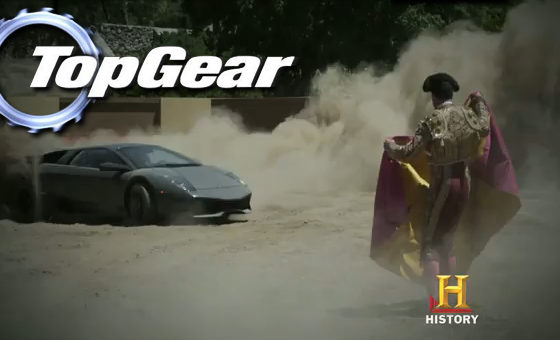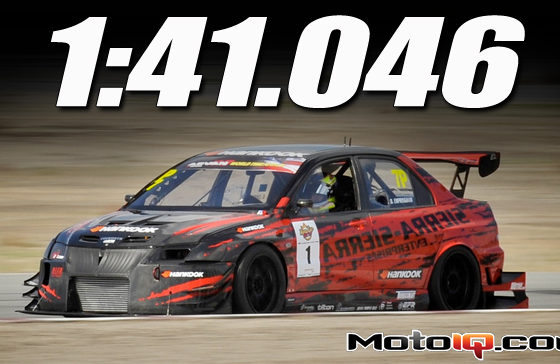,
 |
 |
 |
Just a cursory glance at Cam Waugh’s mechanical resume leaves no doubt about his ability to do our simple swap. The Sprintegra, on top, was Cam’s first swap, completed back in 1995. Far more than just jamming an Integra engine in a Chevy Sprint, the engine was combined with VW mechanical CIS fuel injection and a mechanical advance distributor from an ’85 Accord. Pure genius. The Cadillac Northstar-powered Golf proved no matter how big the square peg, Cam could fit it in any round hole. Jared wrote this feature story on the Coupe de Golf for Sport Compact Car on his first visit to Regina back in 2004. (Ignore Source Interlink’s attempt to erase SCC from history by claiming it was published in Modified).
Far more logical, to my mechanical eye, is the Supra-powered BMW 5-series, which finally brings together a perfectly matched engine and chassis combo.
(While we’re remenising about Cam and Jared, here’s a link to the story from when Jared first met Cam and fell in love with his B6T-powered Festiva.) Anyway, back to the story: |
Our quest for 7’s (a $7,000 car capable of 7-second 0-60 sprints and able to deliver a shocking 70 mpg–all wrapped in a sexy Italian body) has brought us to the deep-freeze that is Regina Saskatchewan in the dead of winter. It is here that Cam Waugh will help us with the single biggest step toward our goal: cramming a modern, computer controlled, Turbocharged Direct-Injection (TDI) Diesel powerplant into the rusty, bantamweight piece of German/Italian origami that is our 1981 VW Rabbit.
Even in 1981, the Rabbit Diesel was capable of over 50 mpg on the highway. 0-60, though, took about a week (ours actually did it in 22 seconds the day before it blew its head gasket). It’s our hope that using an engine that benefits from 20 years of engineering advances will help us knock 15 seconds off the lethargic mosey to 60, and maybe squeeze another 20 miles out of each precious gallon of Diesel. Yea, well, optimism is free.
While we were finding ourselves a clean looking but barely functional Rabbit and somehow, against all odds,
getting it 2,000 miles to Regina without losing any digits, Cam was finding our modern drivetrain. The engine is from a 2003 Jetta TDI and cost us $4,000 Canadian, while the transmission is from a 1998 TDI and set us back another $1,000.
(Remember this was back when American Dollars were still bigger than Canadian ones)
 |
| Unmentioned in the story at this point, Cam also snuck Peloquin’s helical limited slip diff into our transmission. Massive torque and front-wheel drive would be non-stop single-stripe lameness without this diff. |
Mismatching the transmission is our first clever mileage trick. Tall gearing, you see, is critical to stretching fuel economy. The slower the engine can turn, the less energy is wasted overcoming the engine’s own friction. By far the easiest way to put a TDI engine in a Rabbit is to use the Rabbit’s original transmission. In spite of the 20 years of development, the 1.9-liter TDI engine is still a cousin of the Rabbit’s old 1.6-liter IDI (that would be InDirect Injection) engine, and as a result they share a few critical dimensions, like the location of all the bellhousing bolts.
Since three of the engine mounts are actually on the transmission, using the Rabbit’s transmission would have been much easier. We would only have to make one new engine mount, and there would be no rummaging around in Cam’s shelves of wisdom for appropriate axles, shift mechanisms, or clutch cables. It would be so easy, in fact, we might have been able to do it ourselves. Maybe. If we took this approach, though, we’d be stuck with the Rabbit’s gearing, which is too short.
Somewhere in cyberspace we found an old scan of a chart that purported to show efficiency of a Volkswagen TDI engine, and if we believe this chart (what choice do we have? It came from the internet!) the TDI is most efficient at 1800 rpm. Our target, then, is to achieve a tolerable cruising speed with the engine just ticking over at 1800 rpm. With the original Rabbit gearbox, 1800 rpm is only good for 48.5 mph. If we have to drive that slowly to get 70 mpg, we might as well take the bus.
Using the 1998 TDI transmission and installing the tallest 5th gear that will fit, though, (a 5th gear from a European-market Transporter van, naturally) we should be able to cruise at 61 mph right on our 1800 rpm sweet spot. Using this gearbox will make a lot more work for Cam, forcing him to fabricate four engine mounts, find two axles that will fit, make a 1998 TDI shifter fit a 1981 center tunnel, and figure out how to connect a pedal for a cable-actuated clutch to a transmission designed for a hydraulically-actuated clutch by using old Honda parts.
This is why he started early, figuring out how to bolt our engine and transmission into an even rustier 1980 Rabbit GTI in the weeks before we arrived. In theory, we should now be able to pull it out of the GTI, stick it in our car, and head to sunny California without further delay.
If you’ve ever so much as changed your own oil, you know this is pure fantasy. If the mechanical bits don’t scare you, consider this. The Rabbit’s original, mechanically-injected engine required only 6 wires to run and was managed by a pump and a cable attached to your right foot. The new engine has 121 wires going to the computer, 64 going to the instrument cluster, and 6 going to the gas pedal. The computer is also expecting to talk to an ABS computer and might get lonely when it doesn’t find one in our car.
In a few days, we’ll post a detailed report of just what went wrong. Meanwhile, it’s time to get to work.
Related










